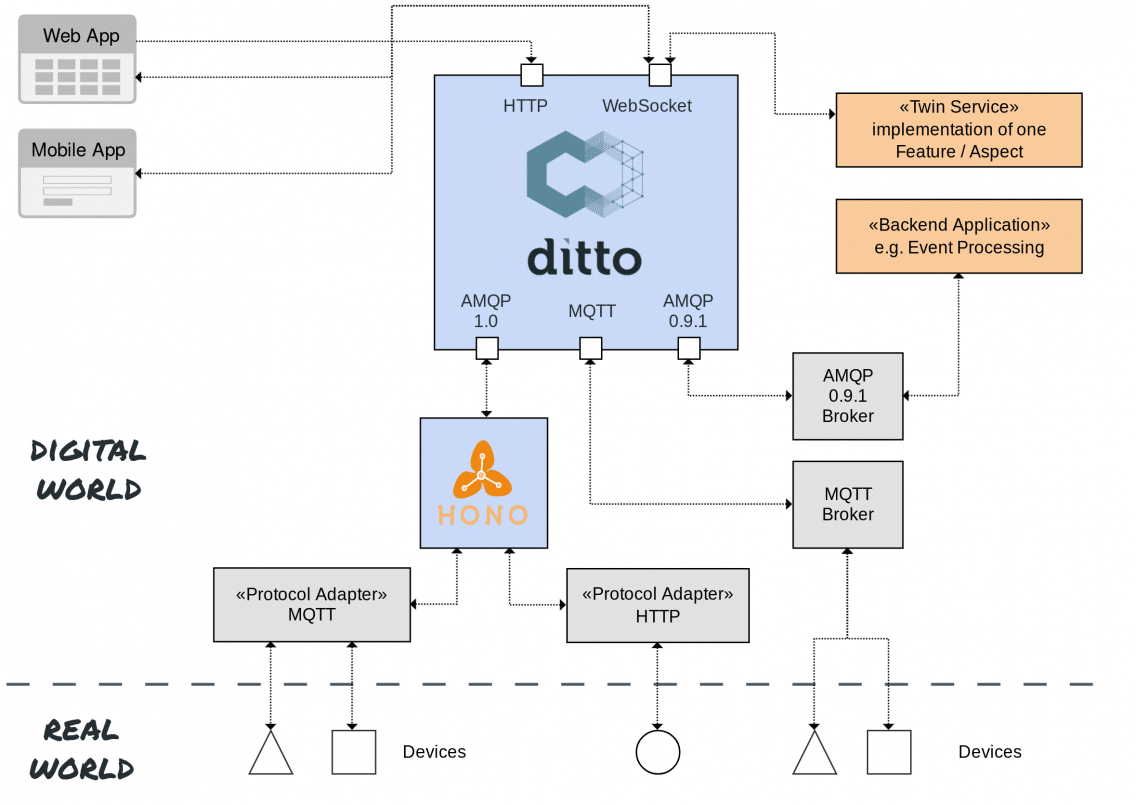› Forums › IoTStack › News (IoTStack) › Eclipse Ditto: How digital twins boost development in the IoT
Tagged: EdgeFog_G7, SW_IDE_S7
- This topic has 1 voice and 0 replies.
-
AuthorPosts
-
-
November 7, 2018 at 8:14 pm #26172
#News(IoTStack) [ via IoTForIndiaGroup ]
A digital twin mirrors physical devices in the cloud. On the one hand, it allows access to specific aspects of a device, enabling you, for example, to evaluate device data. On the other hand, digital twins offer the opportunity to provide additional services around the device, such as enhancing the virtual representation of a device with weather data, or by adding information about its spare parts.

The digital twins concept often also includes the simulation of devices. You can create a digital twin of a device before it’s even manufactured or deployed. You can then simulate the device in use before it is deployed in the real world and use the APIs before the device begins sending data.
The Ditto model
Eclipse Ditto provides a framework that enables you to work with, and manage, the state of digital twins. It builds the bridge between real-world IoT devices and their digital twins.Putting this into context: Eclipse Ditto doesn’t aim to directly integrate the devices. Other options are better suited for this purpose, such as Eclipse Hono. Eclipse Ditto focuses instead on providing APIs for web applications, mobile applications, or other backend services, that use a WebSocket API, an AMQP 1.0 endpoint, an AMQP 0.9.1 Broker or an HTTP API. Connectivity via an MQTT 3.1.1 Broker was also added recently.
-
-
AuthorPosts
- You must be logged in to reply to this topic.
